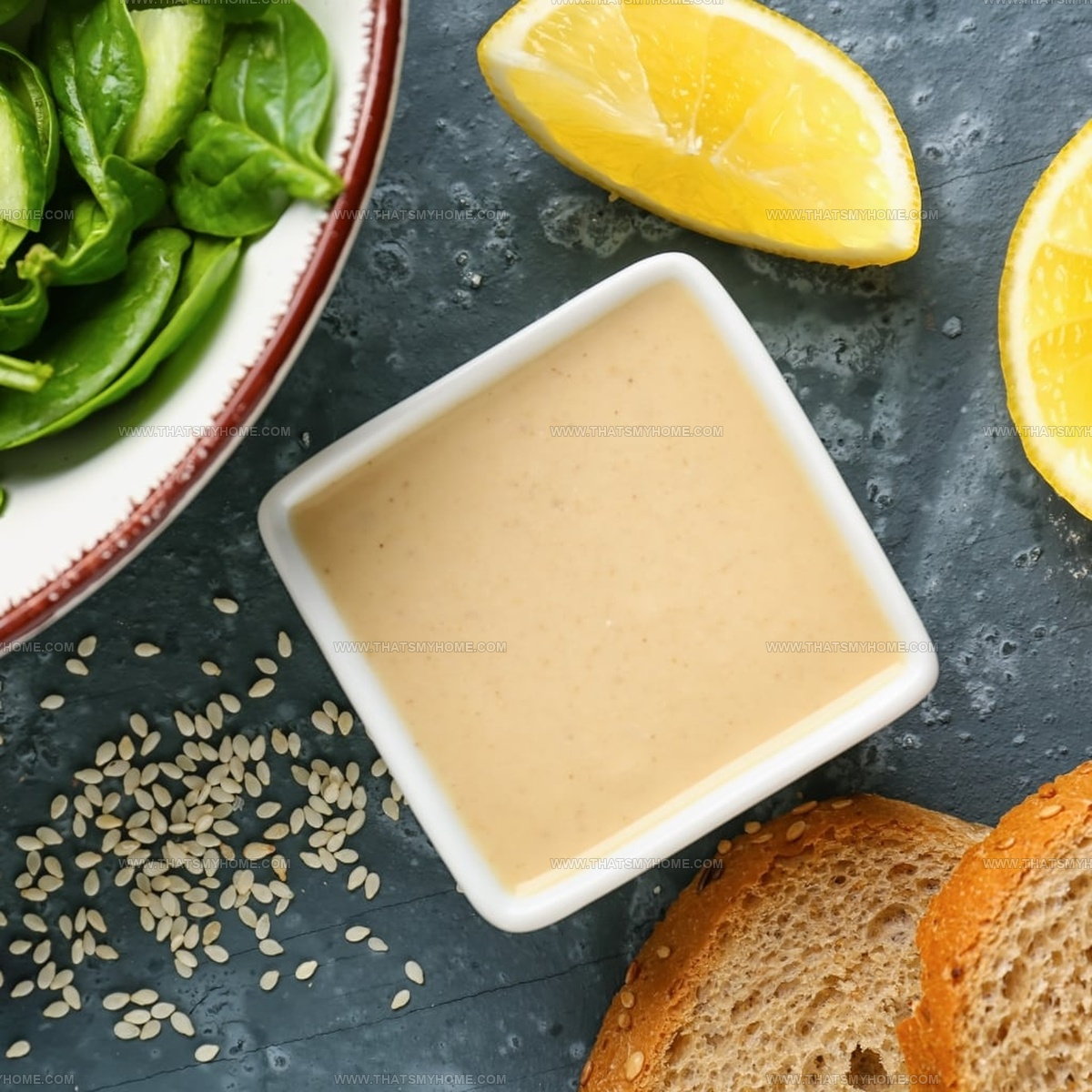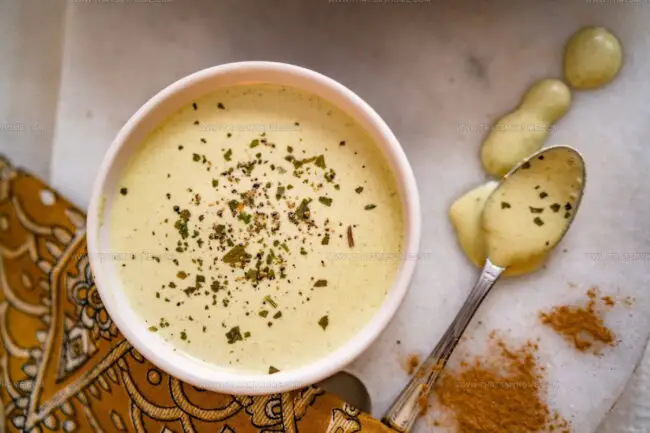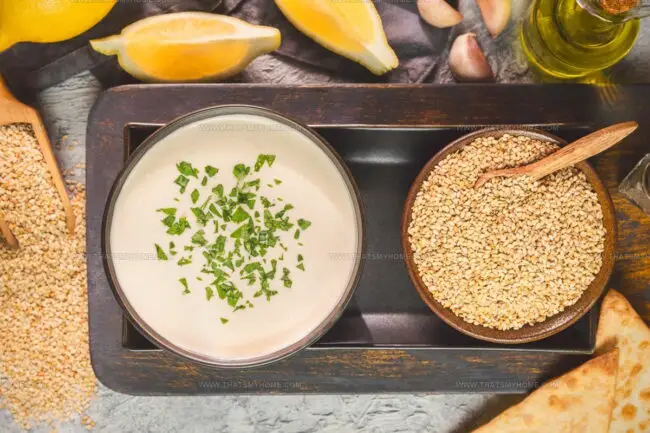7 Delicious Tahini Swaps for Your Kitchen Creations
Tahini, a creamy sesame seed paste, adds nutty richness to hummus, dressings, and sauces.
When tahini isn’t available, alternatives such as sunflower seed butter, almond butter, or Greek yogurt can offer similar creaminess and flavor depth.
Some substitutes are more neutral, while others contribute additional nuttiness or tang.
These seven best tahini substitutes help you keep your dishes smooth and flavorful without compromise.
Knowing the best alternative depends on the recipe and desired taste profile.
These options maintain the essence of tahini-based dishes with accessible ingredients.
Discover how to swap tahini seamlessly in a variety of recipes.
The Best Alternatives for Tahini
Tahini has a nutty, creamy richness. If you don’t have it, you can still create a smooth, flavorful result. Look for something that blends well into your recipe.
Cashew Butter
Cashew butter is an excellent alternative for tahini with its similar creamy texture and rich consistency that works well in most recipes calling for the sesame paste.
Many people actually prefer the milder, slightly sweet taste of cashew butter in hummus and dressings because it doesn't have tahini's slight bitterness.
The nutritional profiles share similarities too, with both offering healthy fats and proteins, though cashew butter contains less calcium than mineral-rich tahini.
You on tight budgets might appreciate that cashew butter is often more readily available in regular grocery stores compared to tahini, which can sometimes be harder to find.
For those with sesame allergies, this swap provides a safe way to enjoy Middle Eastern and Mediterranean dishes without compromising on flavor or texture.
Sunflower Butter
Sunflower butter makes an excellent substitute for tahini in many popular dishes.
Its smooth, creamy consistency and mild nutty flavor profile perfectly mimic tahini's essential qualities without compromising taste.
People with nut allergies often prefer this seed-based alternative since it poses no risk while delivering similar results.
The versatility of sunflower butter shines in classics like hummus, where most tasters can't detect any difference between the original and the substitution.
For best results, just use equal amounts as the recipe calls for, though sometimes a tiny splash of olive oil helps achieve the perfect consistency.
Almond Butter
Substituting tahini with almond butter works beautifully thanks to their similar nutty flavor and creamy texture, making it perfect for classic recipes like hummus and baba ganoush.
Almond butter packs impressive nutritional benefits including protein, healthy fats, fiber, vitamin E, magnesium, and calcium that support your overall wellbeing.
Many people prefer this swap since almond butter is more readily available in regular grocery stores and often costs less than specialty tahini paste.
The slightly sweeter profile of almond butter can actually enhance certain dishes, giving them a unique twist that some people enjoy more than the original.
For those watching their diet, this substitute typically contains less fat than traditional tahini while still delivering that rich, satisfying mouthfeel that makes dips and sauces so delicious.
Sesame Oil
Sesame oil and tahini make fantastic swaps for each other because they both come from sesame seeds and contain beneficial fats your body needs.
The mild, nutty taste of sesame oil adds a gentle creaminess to dishes without the bold flavor that some people find overwhelming in tahini.
Sesame oil flows easily into dressings and marinades, unlike tahini which sometimes needs thinning before use.
The higher levels of unsaturated fatty acids in this golden liquid make it a smarter choice than regular butter or common vegetable oils when you want something healthier for cooking.
Greek Yogurt
Greek yogurt stands out as an excellent substitute for tahini due to its impressive protein content and creamy texture.
The richness of calcium and beneficial probiotics in Greek yogurt makes it a healthier alternative with less fat and fewer calories than traditional tahini.
Many people prefer this swap when looking to reduce overall calorie intake while maintaining flavor in their favorite recipes.
From hummus to salad dressings, Greek yogurt adapts beautifully to savory applications while also performing wonderfully in sweet dishes and desserts.
For anyone caught without tahini in the pantry, this versatile dairy product delivers similar consistency with its own unique nutritional benefits.
Peanut Butter
Peanut butter is an excellent substitute for tahini with its similar creamy texture and nutty flavor.
The nutritional profiles of both ingredients include high protein and healthy fats, making this swap nutritionally sound for your recipes.
Peanut butter's milder taste might require additional seasonings to match tahini's distinctive flavor profile in certain dishes.
Because peanut butter typically creates a thicker consistency, adding extra liquid helps achieve the right texture when replacing tahini.
This simple pantry staple can save your hummus, dressings, and sauces when tahini isn't available.
Black Sesame Paste
Black sesame paste offers a rich alternative to tahini in many recipes, bringing deeper flavor due to its higher fat and sugar content.
The darker color adds visual interest to dishes while maintaining similar functionality in cooking applications.
Its nutritional profile impresses with abundant antioxidants, protein, fiber, vitamins, minerals, and healthy unsaturated fats that benefit overall health.
The paste delivers a more intense, nutty flavor profile than traditional tahini, so adjustments may be necessary when making substitutions in sensitive recipes.
You can easily incorporate this versatile ingredient into hummus, dressings, baked goods, and desserts for an exciting flavor enhancement that maintains the dish's integrity.
Does Tahini Affect Emulsification or Creaminess in Sauces?
While no single ingredient perfectly matches tahini’s nutty, slightly bitter, and earthy flavor, combining several ingredients can come close.
Blends of toasted sesame seeds or sesame oil with nut butters like cashew or almond can mimic the creaminess and richness. Adding a touch of bitterness through ingredients like ground flaxseed or a hint of miso can approximate tahini’s complex depth.
Experimenting with small amounts of lemon juice or garlic can also add brightness and complexity to the blend. Layering flavors gradually helps achieve a balanced taste that feels authentic in various recipes.
Does Temperature Change the Flavor of Tahini Substitutes?
Yes, temperature can influence the flavor perception of tahini substitutes.
Warmer temperatures tend to mellow bitterness and enhance nuttiness, making substitutes taste richer and smoother.
Cold temperatures can suppress some flavors and sometimes accentuate bitterness or dryness, affecting the overall mouthfeel.
For best results, allow sauces with tahini substitutes to come to room temperature before serving. Gentle warming can also help integrate flavors and improve texture, especially in thicker dips or dressings.




Michael Rivera
Co-Founder & Culinary Instructor
Expertise
Education
The French Culinary Institute (now part of the International Culinary Center)
Michael Rivera is a seasoned chef and culinary instructor based in San Francisco, CA. Trained in Classic Culinary Arts at The French Culinary Institute, he refined his skills in Michelin-starred kitchens, mastering classic French techniques and artisanal bread baking.
Passionate about making gourmet methods accessible, Michael co-founded thatsmyhome.com to share his expertise through interactive online lessons and innovative, plant-based recipes. He loves blending traditional techniques with modern ideas, encouraging home cooks to enjoy the art of cooking in a relaxed, fun environment.